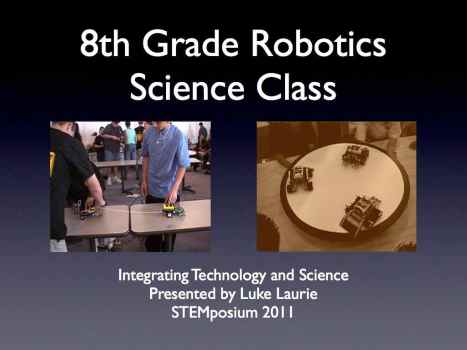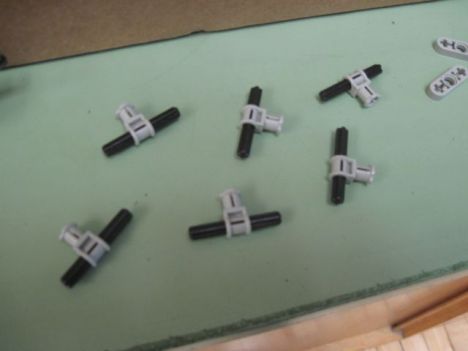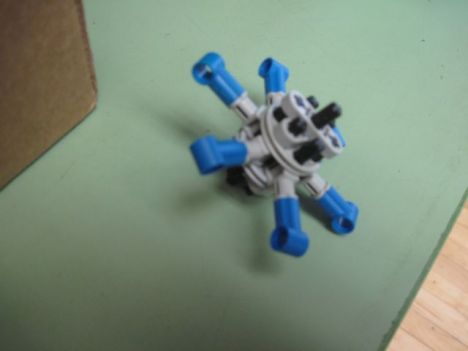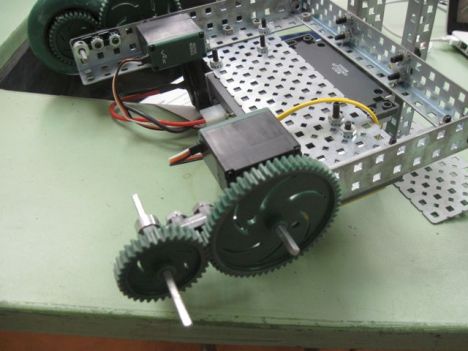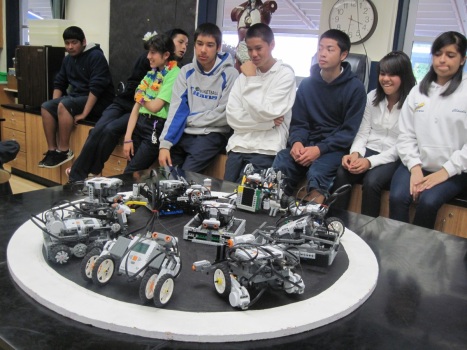Luke Laurie
TNLI Fellow
Summary of Advocacy Work for 2010-2011 School Year
Einstein Summit and HIV Prevention Education
STEM Education, The Einstein Fellowship 20th Anniversary Summit, Summer 2010
During the Summer of 2010, I concluded my work from the previous year by taking part in the planning, coordinating, and implementing the 20th Anniversary Summit of the Einstein Fellowship. This year-long project was implemented by a volunteer committee of former Einstein Fellows, and culminated in a Summit that occurred over 3 days in Washington, D.C. in June of 2010. The highlights of the Summit included: approximately 100 attendees; several whole group sessions and break out sessions on timely STEM education topics; a Congressional Reception; guests from several Federal agencies, the White House, and the Legislative Branch; participation by a few current and former Members of Congress; a Published report of proceedings of the Summit, and a list of ten policy recommendations.
My personal work on the Summit included working on the Planning Committee, Chairing the Program/Agenda subcommittee that developed the topics for the sessions and drafted the program, facilitating the plenary session on STEM education and the Reauthorization of ESEA, and sitting on the panels of the opening plenary session, STEM Education Policy Panel Discussion. I also was the Facilitator of the Einstein Summit Policy Team, which put together the policy recommendations culled from all of the sessions of the Summit, composed a one-page summary, and distributed the recommendations to dozens of lawmakers in the House and Senate. Digitally, these recommendations were distributed to all Capitol Hill staff.
500 copies of the printed report: “From the Classroom to Washington: Einsteins on Education Reform” were printed and distributed by the Woodrow Wilson International Center for Scholars and the Triangle Coalition for Science and Technology Education.
More information on the Summit can be found at the following URL:
http://sites.google.com/site/einstein20summit/
The Report from the Summit can be found here:
http://www.wilsoncenter.org/sites/default/files/E20%20Summit%20Report.pdf
The Policy Recommendations can be found here:
https://lukelaurie.wordpress.com/2010/06/30/policy-recommendations-on-the-20th-anniversary-of-the-einstein-fellowship/
Policy Recommendations on the 20th Anniversary of the Einstein Fellowship
The Albert Einstein Distinguished Educator Fellows, some of the nation’s leading educators, gathered in Washington, DC on June 28-29, 2010, for a 20th Anniversary Summit. Hosted by the Woodrow Wilson International Center for Scholars, the Summit brought together more than 80 current and former Einstein Fellows along with distinguished guest speakers from the White House, Federal agencies, national education organizations, and the U.S. Congress. The goal of the Summit was to generate recommendations to inform and improve science, technology, engineering and mathematics (STEM) education. The Summit covered a variety of educational issues, including national curriculum standards, the Elementary and Secondary Education Act, and educational equity.
Recommendations of the Einstein Fellows:
Support initiatives to enable school systems to implement innovative teaching practices in science, technology, engineering, and mathematics (STEM).
Increase funding for Pre-K-12 education, especially programs that impact each child as opposed to competitive grants. Federal funding is vital to the maintenance and development of STEM programs in states and districts.
Establish national standards for science education and support provisions in the reauthorization of ESEA that give equal treatment to science as to mathematics and language arts. Science knowledge and skills, as part of a comprehensive STEM approach, are vital for all students and provide 21st Century workforce skills, promote national security and global competitiveness.
Include K-12 teachers, such as Einstein Fellows, in the formulation of professional development or curriculum. The real world experience of classroom teachers is an overlooked asset when new programs are developed.
Base school and student assessment on multiple measures and formative assessments.
Create and fund a program to place science specialists to teach and coach in elementary schools. Elementary schools can benefit from the presence of competent STEM teachers who also have skills in working with K-12 students. They can teach STEM and also model effective strategies as instructional coaches.
Support legislation that encourages research-based instruction and teacher training.
Support federal programs to purchase science equipment and provide STEM training to teachers at the K-6 grade levels. This will enable the delivery of inquiry-based, hands-on science experiences.
Establish guidelines to ensure all administrators are competent and knowledgeable in STEM education. Student success and instructional quality depends on strong school leadership.
Support initiatives and funding to enable states and districts to lengthen the school day or school year.
HIV Prevention Education in the Santa Maria-Bonita School District
During the 2010-2011 school year, I spent considerable time pursuing local advocacy by continuing my work to improve HIV prevention education for junior high students in my school district. I had been working on this issue for four years through ongoing communication with other teachers, schools, and administrators. My district had not adopted or purchased new materials nor updated curriculum since before California updated its laws and guidelines governing the mandatory HIV prevention education in 2004. Several discussions and meetings with Science Department chairs and life science teachers in the 2009-2010 school year had revealed that HIV prevention related health content was being taught with outdated materials, or in some cases not taught at all. Through my work and at my request the district began to hold meetings specifically to deal with this issue, during the 2010-2011 school year, to investigate the nature of what we were and were not teaching, to better understand the State’s requirements in this area, to discuss the sensitive nature of the subject matter, and to explore curriculum resources to help us meet our requirements and duty to our students.
My work included researching legal statutes, consulting State guidelines, talking with staff at the State Department of Education, reading health and sex education research, attending several meetings with administration and science teachers, building an extensive digital collection of resources for teachers, and making a presentation to the school board.
The results of this work allowed our district to create new policies to be in compliance with State law, and to begin the adoption process by piloting the Red Cross Positive Prevention Curriculum. I can happily report that I faced little resistance from the administration and the school board, though numerous discussions with teachers turned to debates over the nitty-gritty aspects of what and how to teach the sex-related content.
Below, I have included my comments to my school board upon the first introduction of the curriculum, prior to piloting. The remarks and our presentation of the curriculum was met with unanimous support and positive remarks from the entire board.
The curriculum materials were piloted and approved by the science teachers, and will now, during the 2011-2012 school year, go through the process of being cleared by various committees and going back to the school board for a final vote. I will participate in some of the presentations of the materials.
Link to the training workshop slideshow:
http://homepage.mac.com/mrlaurie/misc/hivinstruction.pdf
Link to the Positive Prevention Red Cross Curriculum:
http://www.positiveprevention.com/
Comments to the school Board on HIV Prevention Curriculum Pilot
I thank the board for allowing me to speak this evening,
In the field of education, we’re always operating within an economy of scarcity. Far from an ideal system for serving the needs of our students, we do not have not enough money, nor enough time, and we have too many students with tremendous needs; academic, social, behavioral, emotional and physical.
In the standards-based educational push of the last decade, we were caught up in fervor to enhance academic learning, specifically, of course, Math and Language Arts. Because resources and time are scarce, schools across the country eliminated programs and courses in the fine arts, health education, physical education, and even science. With this unbalanced approach, we were doing less to educate the whole child.
In our district, we haven’t done enough in recent years to provide our students with the health information and skills they need to make good choices about their sexual health.
The HIV Prevention Education requirement in State law is there to address issues that are vital to our youth. A large fraction of our students are sexually active, and many lack the knowledge and behavioral skills to protect themselves from disease or unintended pregnancy. Santa Barbara County has a teen pregnancy rate for latinas that is the highest rate in the State at 9%. That’s nearly 1 in 10 of our latina population, and three times the average rate for all California teens.
We all know that the challenges for teens who become parents are numerous. And challenging too, are the lives of our students who are being raised by young people who became parents too early themselves. We all bear the costs. And while the Red Cross curriculum is not specifically focused in preventing teen pregnancy, the same knowledge and skills they will gain from learning to prevent HIV will also prevent pregnancy and other sexually transmitted diseases.
The Red Cross Positive Prevention Curriculum provides a framework that teaches the means of transmission and prevention of HIV, but it also includes lessons on behavior and decision making, as well as identifying and avoiding risky situations, and developing refusal skills. The material in this curriculum is presented in a manner that is useful to teachers, and provides them with tools for handling controversial subjects sensitively.
I strongly encourage the board to support this committee’s work and to move forward with the pilot program for the Positive Prevention Curriculum. I also would like to encourage the board to support other improvements in health and sexual health education to provide our students with vital information and skills that will help them live healthy lives.
Thank you.
Filed under: Education, STEM | Tagged: Advocacy, Education, Einstein Fellow, Health, HIV, prevention, STEM, teacher, TNLI | Leave a comment »


